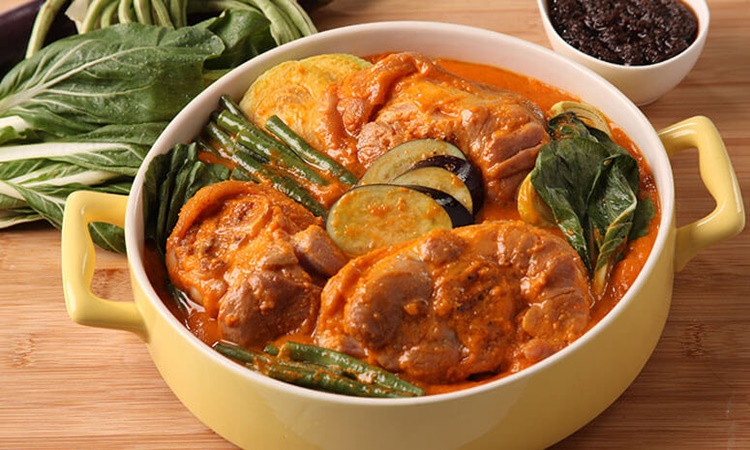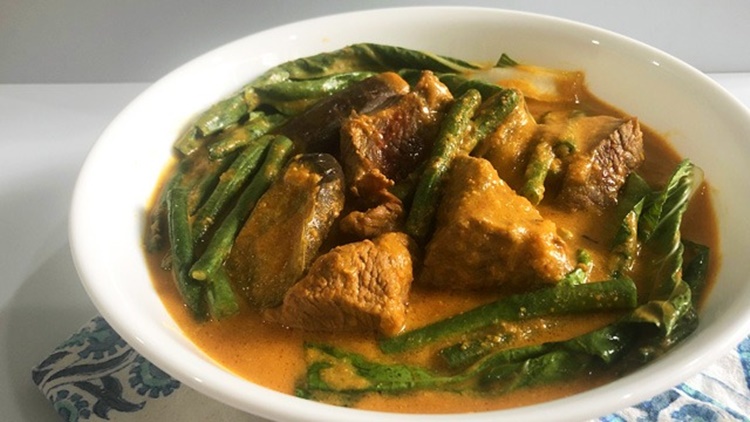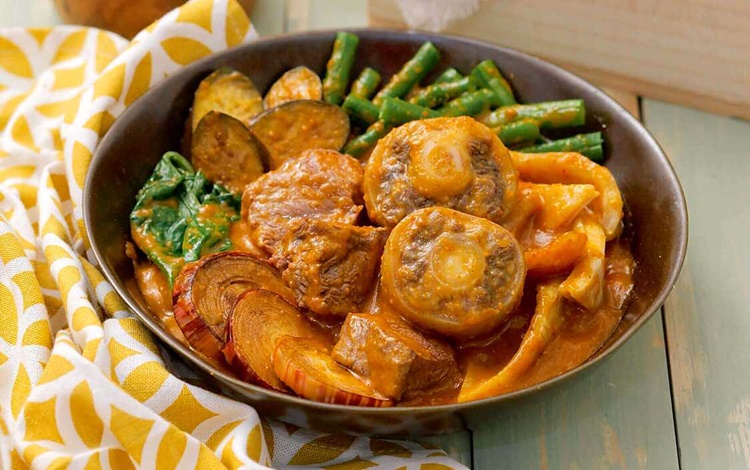KARE-KARE – Here is the history and origin of this beloved Filipino dish that most of us probably didn’t know.
Kare-Kare is a classic Filipino stew known for its rich and savory peanut sauce. This dish is often enjoyed during special occasions and family gatherings, symbolizing the warmth and unity of Filipino culture.
The name “Kare-Kare” comes from the word “kari,” and this dish boasts a rich history and various versions that have evolved over time. It is traditionally made with oxtail, tripe, and vegetables, creating a hearty and flavorful meal.

The sauce is flavored with ground-roasted peanuts or peanut butter, onions, and garlic. Annatto seeds give it its distinctive color, and ground rice can be used to thicken the sauce.
The famous dish is usually served with a side of bagoong (fermented shrimp paste). Some prefer to spice it up with chili or sautéed bagoong and a squeeze of calamansi for added flavor.

HISTORY
It is believed to have originated from Pampanga, a province known as the culinary capital of the Philippines. Kapampangans are popular for their culinary skills and love for cooking. In Mexico, a similar dish called lomo encacahuatado exists, using pork loin instead of oxtail.
Another theory is that the famous cuisine comes from the dishes of Moro royalty who lived in Manila before Spanish colonization. It remains popular in Sulu and Tawi-Tawi.
During the British occupation of Manila, Indian sepoys brought their culinary traditions. They created a dish similar to their kari using local ingredients, which evolved into what we know today.
The dish represents the Philippines’ rich culinary tradition. This meal, whether served in its classic form or one of its numerous variations, is a Filipino favorite and a representation of the different influences that have shaped Filipino cuisine.

